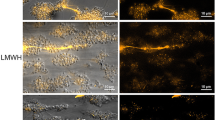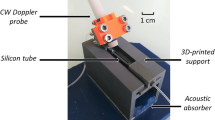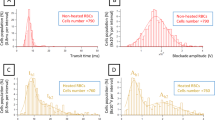Abstract
THE cell-free marginal zone of plasma in vessels of living animals, due to the axial accumulation of red blood cells, was already known to Haller and Spallanzani in the eighteenth century1. The formation of this zone was later studied by Poiseuille1 in arteries, veins and capillaries in various species of the living animal. He found that, with increased velocity, the thickness of this layer was augmented. Recently, in the course of investigations on the flow of blood columns using a tilting viscometer (Scott Blair, G. W., personal communication), we made the following observation. If an index of human or rabbit blood, containing 0.01 mgm. heparin/ml. as anticoagulant, be permitted to flow down a large capillary tube held at varying angles from the vertical, then films of blood of varying thickness can usually be seen macroscopically on the wall after the column has passed. This finding led to investigations on the flow of varying indexes of blood, plasma and serum in glass tubes 0.5–1.4 mm. in diameter, where the Reynolds number is so small that turbulence is out of the question. We found that the adherence of fluids from moving indices in such capillary tubes can be determined by simply measuring the reduction in the length of the index after it has travelled a certain distance, and then calculating the thickness of the adherent layer. By this method, we found that this phenomenon is not limited to blood, but can also be detected when cell-free plasma or serum is used instead. Moreover, this adherence is not dependent on glass surfaces, as we found it in tubes coated with silicone, ‘Lusteroid’, ‘Perspex’ and paraffin as well.
This is a preview of subscription content, access via your institution
Access options
Subscribe to this journal
Receive 51 print issues and online access
$199.00 per year
only $3.90 per issue
Buy this article
- Purchase on Springer Link
- Instant access to full article PDF
Prices may be subject to local taxes which are calculated during checkout
Similar content being viewed by others
References
Poiseuille, J. L. M., Ann. Sci. Naturelles, 2, Sér. Zoologie, 5, 111 (1836); “Acad. Sci. Savants étrangers”, 7, 44 (Impr. Royale, Paris, 1839).
Copley, A. L., Krchma, L. C., and Whitney, M. E., J. Gen. Physiol., 26, 49 (1942).
Copley, A. L., Proc. Int. Congr. Rheology Scheveningen 1948, 1, 47 (North-Holland Pub., Amsterdam, 1949); J. Colloid Sci., 7, 323 (1952).
Bayliss, L. E., “Deformation and Flow in Biological Systems”, edit. by Frey-Wyssling, A., 355 (North-Holland Pub., Amsterdam, 1952).
Copley, A. L., Abstr. Comm. 19, Int. Physiol. Congr., Montreal, 1953, 280; Arch. Int. Pharmacodyn., 99, 426 (1954); Aerztl. Forsch., 11, 1/114 (1957); Lancet, i, 102 (1957) and ii, 1119 (1957).
Author information
Authors and Affiliations
Rights and permissions
About this article
Cite this article
COPLEY, A. Adherence and Viscosity of Blood Contacting Foreign Surfaces and the Plasmatic Zone in Blood Circulation. Nature 181, 551–552 (1958). https://doi.org/10.1038/181551a0
Issue Date:
DOI: https://doi.org/10.1038/181551a0
This article is cited by
-
On biorheology: Joint plenary lecture
Rheologica Acta (1974)
-
Intravital-Veränderungen der Mikrozirkulation beim Shwartzman-Sanarelli-Phänomen
Archiv für Kreislaufforschung (1970)
-
Theoretische Deutung intravitalmikroskopischer Beobachtungen bei Hypertonikern
Archiv für Kreislaufforschung (1967)
-
Blutplättchen und gerinnungsaktive Plasmaproteine Ein kurzer Abriß ihrer Funktion und Pathologie
Blut Zeitschrift für die Gesamte Blutforschung (1962)
-
Capillary flow and wall adherence of bovine blood, plasma and serum in contact with glass and fibrin surfaces
Kolloid-Zeitschrift (1960)
Comments
By submitting a comment you agree to abide by our Terms and Community Guidelines. If you find something abusive or that does not comply with our terms or guidelines please flag it as inappropriate.



